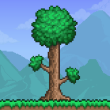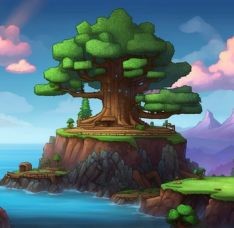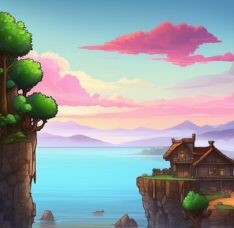
Terraria Review
At first glance, Terraria might appear a bit simplistic, given its retro 2D visuals and rudimentary pixel graphics. However, it quickly becomes evident that the game's charm lies in its depth, with complex and engaging gameplay mechanics that make for a thrilling experience.
Developed by Re-Logic, Terraria kick-starts without a structured storyline. Instead, it drops you into a randomly generated world, where your fate and the outcome of the game are entirely up to your creativity and survival skills. It's more about crafting your narrative. With a world filled with hidden treasures, secret locations, and perilous enemies, the more thought and time you invest, the more rewarding the game becomes.
None can explain the term 'character' better than Terraria because you are the main character. Terraria does not limit the gamer to a pre-defined character but allows them to create and customize their persona. It adds a personal touch and gives the player a sense of belonging.
Terraria's gameplay mechanics emphasize exploration, crafting, building, mining, and combat, much in the style of sandbox games. The combat system is rich and diverse, with options ranging from melee and ranged to magic attacks. It also features an intelligent crafting system, encouraging players to mine resources, find loot, and create more sophisticated items to survive and thrive.
The Intricacies of Gameplay
A fundamental aspect of Terraria's gameplay is exploration. The game offers an expansive, complex world teeming with secrets. Set amidst randomly generated environments, each brings a unique terrain full of forests, deserts, caves, floating islands, underground jungles, and various underworld dimensions. You are encouraged to explore these locales exhaustively, as they harbor a multitude of treasures, resources, enemies, dungeons, and distinctive biomes that influence the player's survival and progression.
Mining is also central to the game, with its focus on resource gathering. The genre-spanning mechanic encourages players to wield their pickaxe to mine raw materials from the environment creatively. These materials range from common dirt blocks to rare ores that can be strewn to the farthest ends of the game world. The thrill lies in the chance discovery of precious loot, as the players never know what lies below the next layer.
The Crafting Mechanic in Terraria
Once the resources are gathered, the next critical element of gameplay emerges, which is an elaborate crafting system. Players can convert collected materials into tools, furniture, armor, weapons, and a plethora of functional and decorative items at specific crafting stations. Crafting not only aids survival but also allows the player to advance technologically, introducing more sophisticated tools as the game progresses and allowing for complex construction and defense mechanisms.
Building in Terraria is only limited by your imagination. Players can construct elaborate bases with an array of materials to protect themselves and NPCs from hostile creatures. Additionally, housing becomes a crucial strategic element to draw Non-Player Characters (NPCs) to your village. These NPCs, once housed, offer services and goods that further assist in the survival and progression of the player.
Lastly, Terraria is also celebrated for its combat system. The game features a diverse bestiary, ranging from passive critters and common enemies like zombies and slimes to towering bosses. Setting itself apart from typical action games, Terraria gives players the freedom to engage in battles their way, letting the choice of weaponry (melee, magic, or ranged) drive the battle strategies.
In essence, Terraria’s gameplay weaves an intricate web of exploration, mining, crafting, building, and combat, steering the players into an immersive world of danger, creativity, and endless possibilities. The intricate gameplay warrants players to continually adapt, innovate, and plan, making every moment within Terraria a captivating encounter.
The game's sound design deserves special mention. From the tranquil beats during sunny mornings to unnerving melodies during boss fights, it significantly contributes to setting Terraria's atmosphere and mood. The 2D pixel graphics, inspired by retro sprite-based games, are rich with detail. The nights shimmer under the moonlight, and the days beam with sunshine.
Terraria offers multiplayer options, allowing a cooperative play style where gamers can team up to tackle intense combat situations or big construction projects. The side-quests come in the form of 'boss fights' that vary from defeating flying eyes to enormous wall monsters, each opening up new progression paths, creating a rich and varied gameplay experience.
The game controls are straightforward yet effective, providing an immersive experience. The game's vastness and the endless possibilities for exploration also contribute significantly to its replayability.
Overall, Terraria is a game that continually encourages curiosity, exploration, and creativity. I would personally rate it a solid 9/10. Potential gamers should consider the learning curve and the need for time investment. Here's a roundup of the game's pros and cons:



